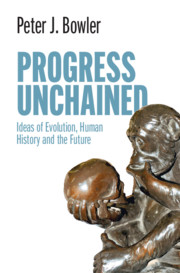Book contents
- Progress Unchained
- Progress Unchained
- Copyright page
- Contents
- Figures
- Preface
- 1 Introduction
- Part I The Ladder of Progress and the End of History
- 2 From the Chain of Being to the Ladder of Creation
- 3 The Hierarchy of Humanity
- 4 Progress to Paradise
- 5 Ascent to Utopia
- 6 End of an Era?
- Part II Towards a World of Unlimited Possibilities
- Bibliography
- Index
3 - The Hierarchy of Humanity
from Part I - The Ladder of Progress and the End of History
Published online by Cambridge University Press: 11 February 2021
- Progress Unchained
- Progress Unchained
- Copyright page
- Contents
- Figures
- Preface
- 1 Introduction
- Part I The Ladder of Progress and the End of History
- 2 From the Chain of Being to the Ladder of Creation
- 3 The Hierarchy of Humanity
- 4 Progress to Paradise
- 5 Ascent to Utopia
- 6 End of an Era?
- Part II Towards a World of Unlimited Possibilities
- Bibliography
- Index
Summary
The last step in the ascent of the chain of being was from the apes (considered as the highest animals) to humans. In the eighteenth century the linear model of the chain was applied to this transition by depicting the non-European races as intermediate stages between the apes and the highest human type. Nineteenth-century anthropologists used various characters, especially skull size and shape, to give an appearance of scientific credibility to the supposed racial hierarchy. Early theories of evolution often treated the 'lower' races as relics of earlier stages in the origin of humanity. When evolution was represented as a branching tree, the concept of parallelism was invoked to imply that some branches of humanity had not advanced as rapidly up the scale as others. Europeans' sense of their own racial superiority was thus preserved in the post-Darwinian era by converting the chain of being into an abstract scale of mental development ascended by several forms but at different rates.
- Type
- Chapter
- Information
- Progress UnchainedIdeas of Evolution, Human History and the Future, pp. 69 - 88Publisher: Cambridge University PressPrint publication year: 2021

